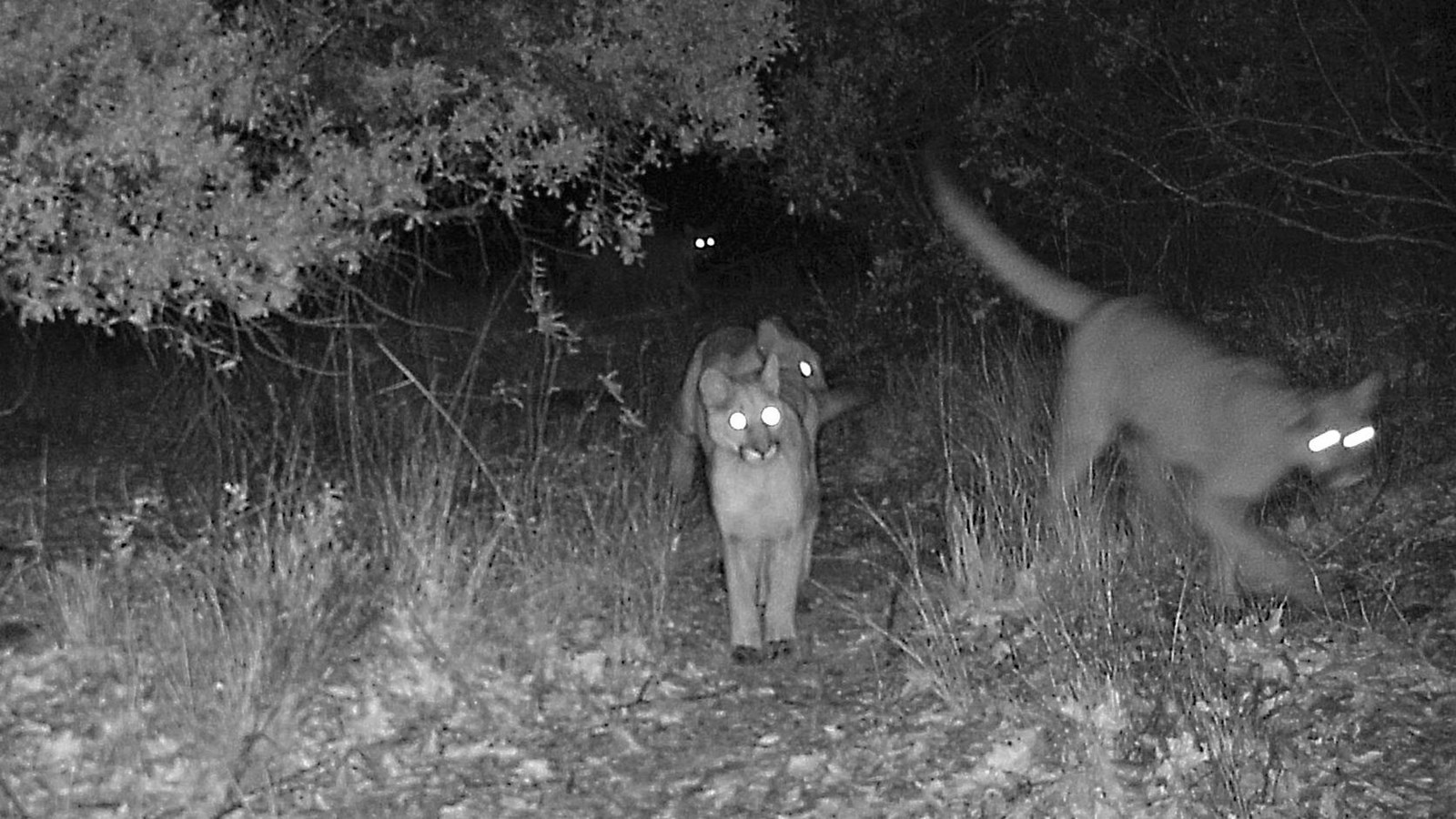Last updated: July 22, 2024
Place
Window Trail Stop #5

NPS Game Camera
Quick Facts
Location:
Big Bend National Park
In addition to black bears, mountain lions also roam the Chisos Mountains and surrounding desert. These large cats can live in many different habitats, including forested mountains, grassland, and desert. Their preferred diet consists mainly of deer, though in the Big Bend region, javelina and rabbits may also be on the menu. As apex predators, mountain lions play an important role in limiting herbivore populations, which helps maintain diverse and sustainable ecosystems. Each year, more than 150 mountain lion sightings are reported by visitors to the park. While most of these sightings happen along park roads, encounters have occurred along trails. While mountain lions generally avoid people, aggressive behavior can be caused by a number of factors including: a mother protecting kittens, a juvenile cat learning what is and is not prey, an older, injured, or ill cat who is stressed for food, or a curious cat whose ambush instincts are triggered by behavior such as running. In the event you do encounter a mountain lion – do not run! Keep children close, do not let them run ahead while hiking. Maintain eye contact and never turn away from a lion. Make yourself look as big as possible and move away very slowly. If the lion approaches, make lots of noise and throw rocks at it. If it attacks – fight back!
